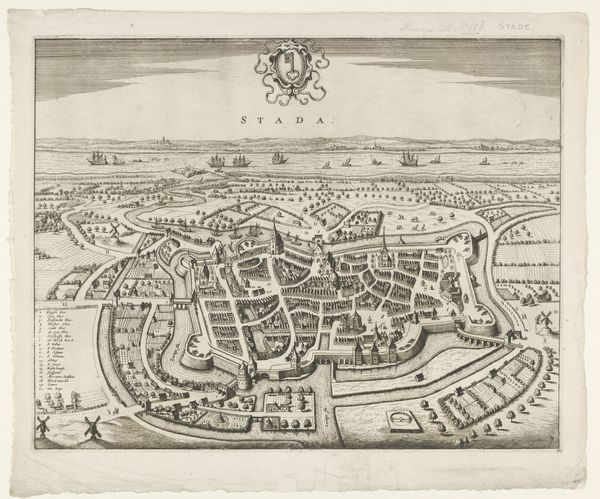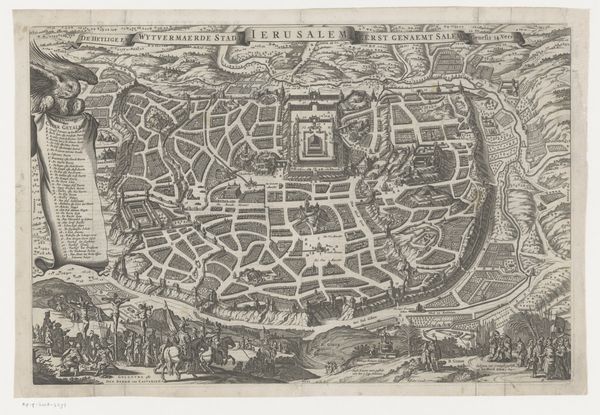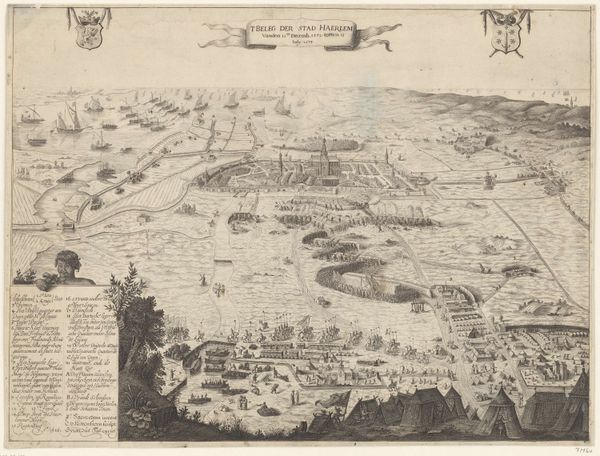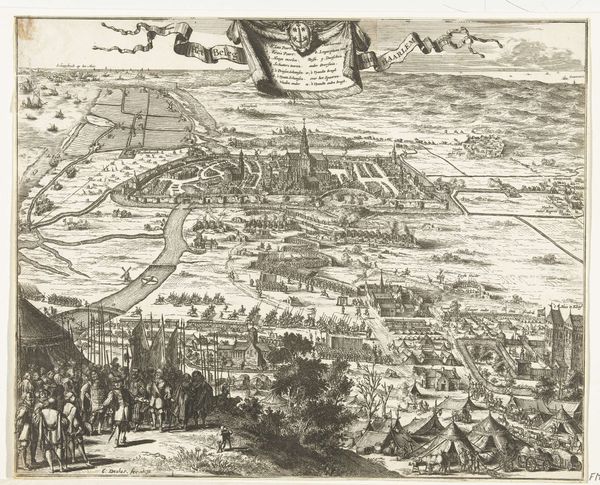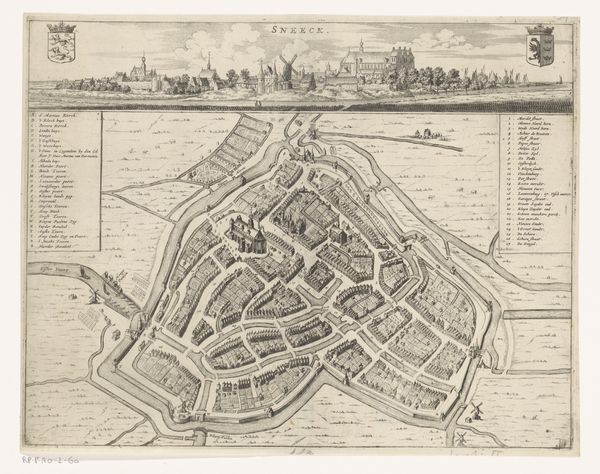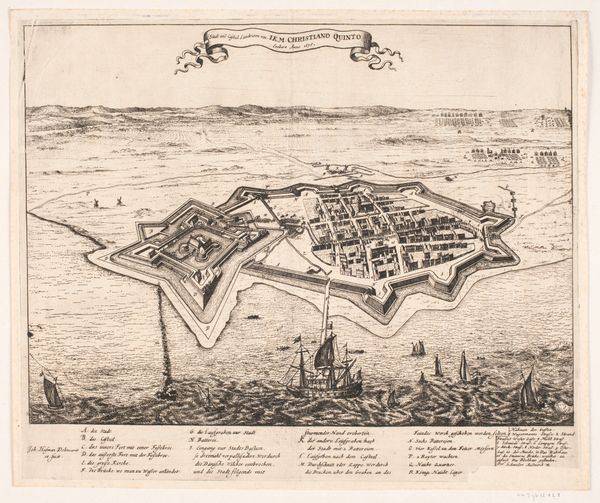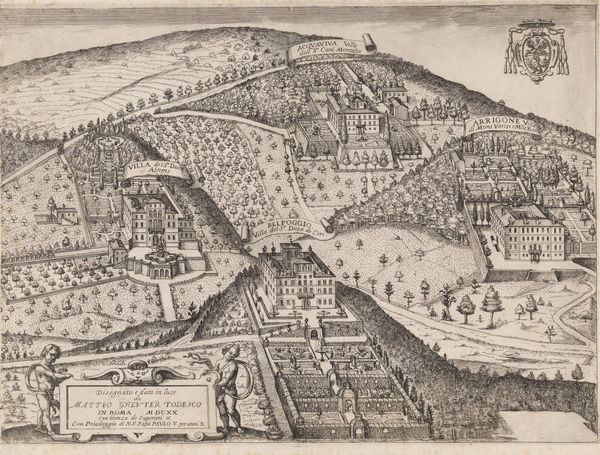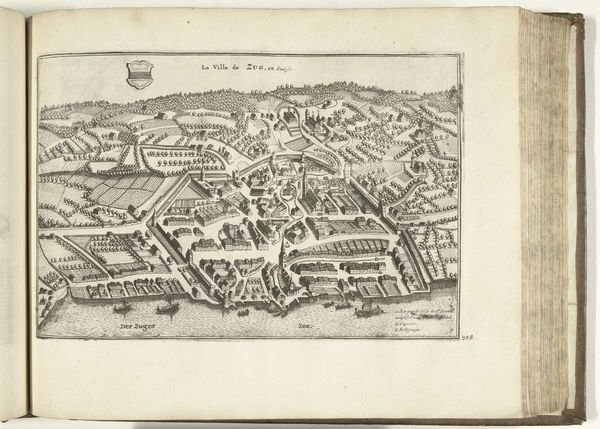
print, engraving
#
dutch-golden-age
# print
#
cityscape
#
islamic-art
#
engraving
Dimensions: height 309 mm, width 367 mm
Copyright: Rijks Museum: Open Domain
Editor: This is an engraving from 1682 entitled "Vogelvluchtperspectief van Pulicat" or "Bird's-eye view of Pulicat." It depicts the cityscape, and honestly, it gives me this slightly unsettling feeling due to the presence of what seems to be public executions in the foreground. What aspects stand out to you? Curator: Well, considering its creation during the Dutch Golden Age, and Pulicat's role in the Dutch East India Company's trade network, that "unsettling" feeling you have is spot-on. What's depicted in the foreground, and its juxtaposition with the city itself, reveals a great deal about colonial power. Editor: So, the placement of the execution scene isn't just incidental? It’s deliberate imagery used to convey power dynamics? Curator: Exactly. Look at the perspective; we are meant to view the city – Pulicat – a vital trading hub, but our eye is drawn to these acts of colonial justice. It’s a demonstration, visually communicating Dutch authority. Consider the role prints played then; they were a means of disseminating information, yes, but also propaganda, reinforcing ideas about control and civilization. Does seeing it that way shift your understanding? Editor: Absolutely. I initially saw it as a detached, almost cartographic view. But framing it within the context of Dutch colonialism and the politics of visual representation really changes the picture. The artist chose to depict violence and control as part of this overall view, reinforcing a certain narrative. Curator: Precisely. By analyzing the public role this image played, the politics of this imagery becomes strikingly clear.
Comments
No comments
Be the first to comment and join the conversation on the ultimate creative platform.

